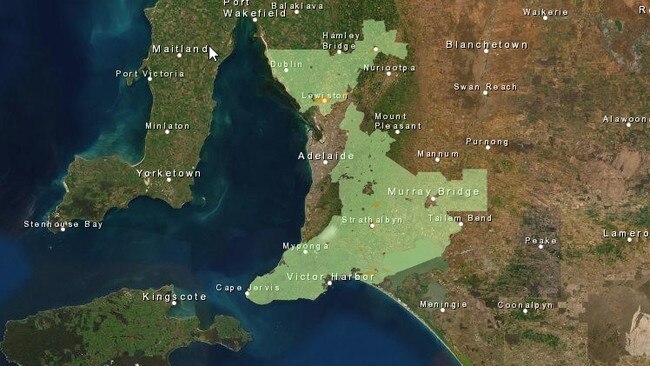Urban Development Institute of South Australia says infill development of suburbs ‘ad hoc’
Developers have criticised huge changes to planning laws – saying they haven’t improved housing affordability – while warning about rampant demolition of our suburbs.

SA News
Don't miss out on the headlines from SA News. Followed categories will be added to My News.
South Australia’s developers lobby has warned the state government must stop relying on “ad hoc” demolition of Adelaide’s existing suburbs to supply new housing, arguing it is not improving affordability.
And “flawed” urban growth boundaries, introduced in 2017 to limit the spread of Adelaide’s suburbs but opposed by developers, have put at “very significant risk” the supply and affordability of housing in parts of the city, the Urban Development Institute of Australia says.
A State Planning Commission inaugural boundary review has recommended minor changes to so called Environment and Food Production Areas, which protect important environmental and agricultural land in areas including the Adelaide Hills, Adelaide Plains, and near Murray Bridge from housing subdivision.
The decision was based on a planning department land supply analysis delivered in June which concluded Adelaide had sufficient land to support housing and employment growth for the next 15 years.
UDIA executive director Pat Gerace, who represents the state’s largest developers, said the institute had “serious concerns” with the commission’s decision and potential “long-term impacts” on liveability.
“Our submission also detailed our concerns … why the commission shouldn’t just accept that we keep doing more of the same, and in particular relying heavily on the ad hoc demolition of a large number of existing houses in established suburbs,” he said.
“There needs to be more focus on larger strategic infill sites and new growth areas that can better cater for a more sustainable and liveable city.”

In a submission to the review of the so-called Environment and Food Production Areas, the UDIA was concerned about the “level of supply” predicted from general infill – knocking down a house and replacing it with multiple properties.
“It is general infill that has caused considerable community angst and the SPC itself spent considerable time working on developing guidelines because of the backlash around the impacts of this unplanned development,” the UDIA said.
“General infill does not make a contribution to the enhancement or upgrading of existing infrastructure networks and it is particularly concerning the reliance on this as a key part of supply.
“In contrast greenfield development and strategic infill are required to make sure much of the infrastructure is properly planned and provisioned for with contributions made by developers.”
The UDIA submission says that it is “almost impossible” to develop affordable three-bedroom houses within 10-15kms of the CBD without “external or internal subsidies”.
The UDIA says land is particularly in short supply in Adelaide’s southern and outer southern suburbs.
Under the PDI Act the boundaries must be reviewed every five years but the UDIA, Housing Industry Association and Master Builders SA have called on the commission to undertake another land supply review based on the 2021 Census data.
The MBA SA and HIA both said it was “flawed” to suggest Adelaide had enough land for 15 years.
“We are already seeing how underprepared we are with providing adequate housing with very tight vacancy rates and rising home prices,” HIA executive director Stephen Knight said.
“The shift from infill development to greenfield development and land affordability have not been adequately addressed in this (boundaries review) report.”
State Planning Commission chair Craig Holden said boundary review used the most “up to date” available data.
“The commission is looking forward to receiving new data from the August 2020 Census that will start to be released by the ABS from the middle of next year,” he said, adding the data will underpin a review beginning this year of the 30-year Plan for Greater Adelaide.
“If the new data shows deviations from the assumptions and projections presented in the land supply Reports, the commission can review the EFPA, prior to the (statutory) five yearly review.”



